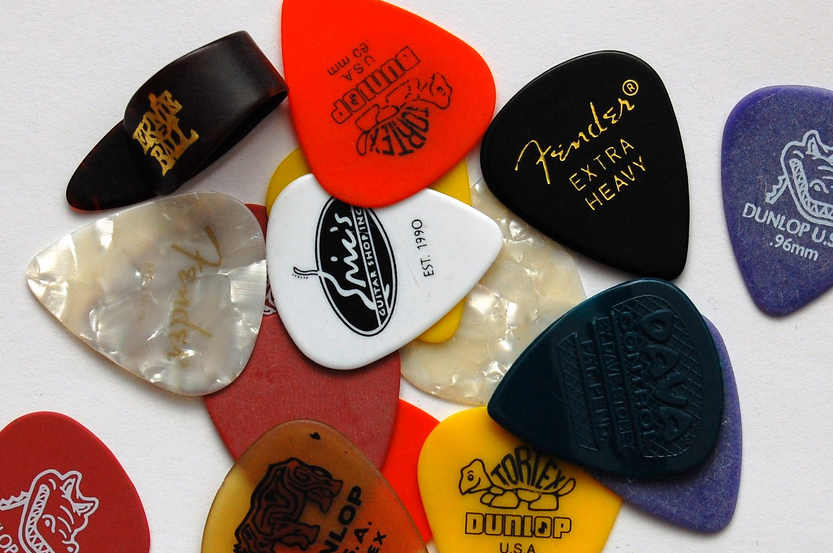
Welcome back to Roadie’s guitar plectrums series! If picking the right pick has you lost in a world of confusion, then this is the series for you!
We’ve covered plectrum gauges, we’ve covered plectrum materials, and by now you’re probably starting to get a feel for which plectrums are right for your sound.
But, we’ve got one important category to get through before you’re fully familiar with the ins-and-outs of guitar picks – and that’s plectrum shapes.
The humble pick comes in all shapes and sizes, and those variables have all kinds of implications for your playing.
So, before you reach for that bag of cheap guitar picks on the guitar store counter, before you fumble around with the freebie plectrums that came with your cheap acoustic guitar or electric guitar starter kit, heed the words of this guide.
Because, whether you’ve just started guitar classes and had some basic guitar lessons or you’re a seasoned pro playing live across the country, finding the right plectrum is key to your playing.
Understanding tips and bevels:
You’ve probably heard the terms “tip” and “bevel” used in relation to plectrums before, but perhaps haven’t understood what they mean.
Put simply, the tip is the pointy bit on the end of your plectrum, while the bevel refers to the sloping edges around that tip.
That’s all great, we hear you say, but what does that man from a guitar playing perspective? Well, the sharper the tip, the faster you’ll be able to play. Sharper picks tend to be better for fast lead lines – especially when it comes to things like tremolo picking, as well as chuggy rhythm parts. Rounded edges, meanwhile, are going to produce mellower sounds, and are generally preferred by acoustic strummers.
Likewise, the bevel affects the plectrum’s attack on the guitar string. That more contoured that edge, the lesser the degree to which the pick grips the string. A good bevel is preferred by most players, simply because it means that the pick glides off the string, making playing easier.
Plectrum shapes:
Picks come in many shapes and sizes, but here’s a list of the usual suspects you’ll find at your local guitar store and what they’re good for:
Standard:
This heart shaped plectrum is pretty ubiquitous, and sometimes referred to as the 351 after its manufacturer number. It’s a good all-rounder, and not a bad place to start if you’re picking your first pick.
Standard Shape, Sharp Tip:
As the name suggests, more or less the same as a standard pick, but with a larger, pointed tip. Dunlop’s Ultex Sharp and Tortex TIII are popular examples. This one offers a bridge between the ease of use of a standard plectrum and the increased control you get with a jazz pick. Speaking of which…
Jazz III:
Smaller than the standard pick, the Jazz III, as the name suggests, initially found popularity with jazz players. But, it’s since become popular in many genres because it allows for increased speed and precision. Because of its smaller shape, the Jazz III isn’t as easy to hold as the standard pick, so is perhaps better suited to advanced players.
Pointy pick:
The clue’s in the name with this one. Small, like a Jazz III, its pointy tip is designed for precision playing. This one’s size makes it awkward, and it falls down when it comes to strumming. As a result, it’s something of a niche choice.
Teardrop:
Not dissimilar to the standard pick, the teardrop has a rounder shape and a less pronounced tip. It’s good for softer, mellow strumming, but not for screaming lead lines.
Triangular pick:
Popular with bluegrass players for playing lots of chords and fast lead lines, this one comes in a large size that is hard to use for regular playing. But, it does have three identical edges, meaning that when one wears out, you can switch to another.
Shark Fin:
Finally, we come onto the shark fin, so called because it looks like a shark fin (imagine that!). This one is also bit of an acquired taste. At the bottom is a rounded edge, allowing for normal playing, while there is a wavy line on one side, designed for effects and noises such as pick scraping. One for the avant-gardists out there!

